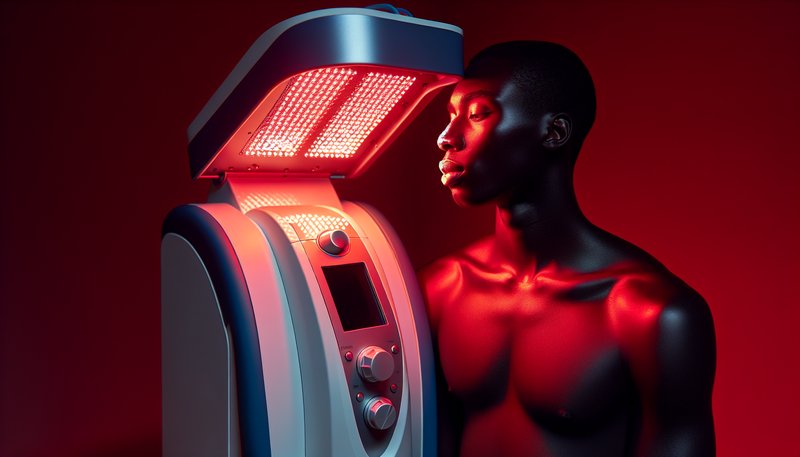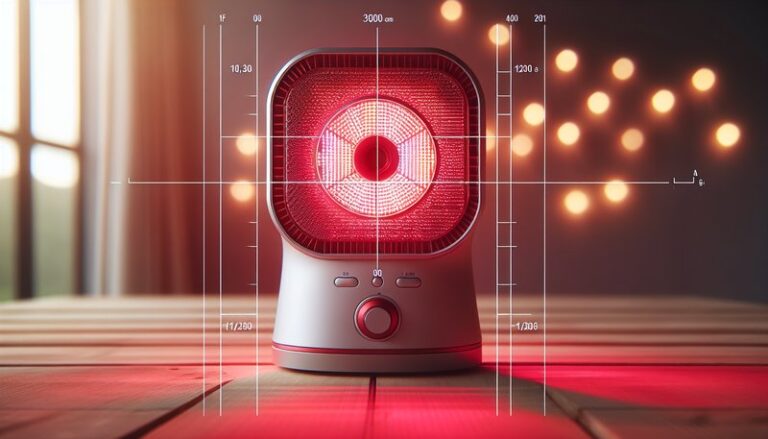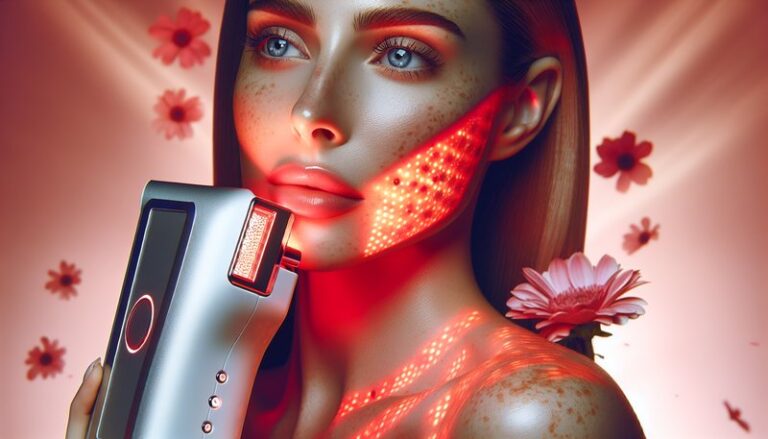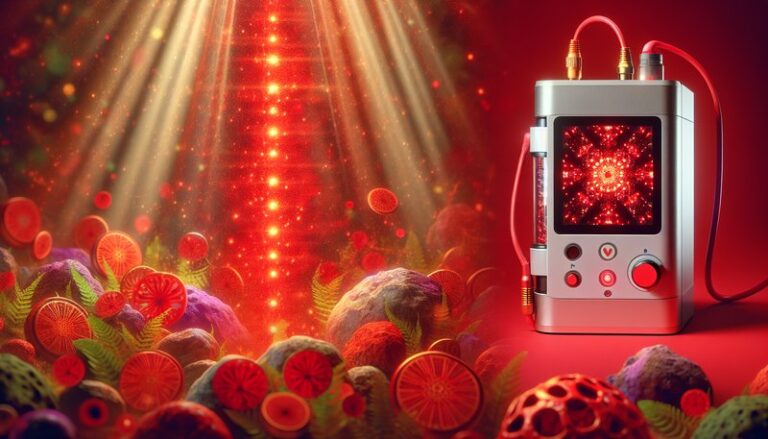Is Red Light Therapy Safe For Dark Skin?
Is Red Light Therapy Safe For Dark Skin?
Is red light therapy an effective option for those with darker skin tones?
As the popularity of red light therapy (RLT) continues to grow, many individuals, particularly those with darker skin, are keen to know its safety and efficacy. This article will explore the nature of red light therapy, its benefits, safety considerations for darker skin, and alternatives available. By the end, you should have a thorough understanding of whether this treatment is right for you.
Key Takeaways
- Red light therapy is generally considered safe for all skin types, including dark skin.
- Its benefits range from improved skin tone to accelerated healing processes.
- Proper usage protocols are vital to minimize any risks associated with skin sensitivity or conditions.
What is Red Light Therapy?
Red light therapy involves the use of low-wavelength red light, typically in the range of 600 to 900 nanometers, to promote healing and rejuvenation in the body. It stimulates cellular processes, encouraging energy production in the mitochondria, which leads to various therapeutic effects on skin and tissue.
RLT can be administered through various devices, including LED panels, handheld devices, or full-body light beds. It’s popular in dermatology for treating skin conditions, managing pain, and reducing inflammation. While it has gained attention in recent years, its roots trace back to the 1960s, when scientists first discovered its biological effects.
What are the Benefits of Red Light Therapy?
The advantages of red light therapy extend across numerous domains, especially for skin health and recovery. Below are some notable benefits:
Skin Improvement and Repair
Red light therapy stimulates collagen production, resulting in firmer, younger-looking skin. It can benefit individuals with acne by promoting healing and reducing inflammation.
Wound Healing
Research shows that RLT accelerates wound healing by enhancing cellular repair and regeneration. For those with darker skin tones, this can mean fewer complications and better cosmetic outcomes after surgery or injuries.
Understand more with Can Red Light Therapy Trigger Migraines?
Pain Relief and Inflammation Reduction
Many people find relief from chronic pain conditions when using RLT. It can penetrate deeper tissues, reducing inflammation and promoting blood circulation, which is beneficial for muscle recovery after workouts.
Enhanced Mood and Energy Levels
RLT may positively affect mood and fatigue. By increasing ATP production within cells, individuals report higher energy levels and improved mental health.
Is it Possible to Use Red Light Therapy Safely on Dark Skin?
The question of safety arises frequently, particularly for those with darker skin. Concerns about possible adverse effects, like hyperpigmentation or skin irritation, are common misconceptions.
What are the Advantages of Using Red Light Therapy on Dark Skin?
Adopting RLT on darker skin offers several benefits:
- It does not cause burning and has a minimal risk of creating scars or discoloration in comparison to more invasive procedures.
- The therapy can help improve hyperpigmentation issues often experienced by darker skin tones.
- Increased cellular regeneration can enhance the overall health and appearance of the skin.
What are the Disadvantages of Using Red Light Therapy on Dark Skin?
Despite its advantages, some considerations regarding the use of RLT on darker skin include:
- The efficacy may vary due to pigmentation levels that can affect absorption rates.
- Patches of hyperpigmentation might take longer to fade, and thus, patience is required during the healing process.
What are the Things to Consider Before Using Red Light Therapy?
Before embarking on RLT, there are specific factors to take into account:
Skin Type Assessment
Recognize your skin type and its potential sensitivity. If you have highly reactive skin, it’s essential to consult a dermatologist before starting any therapy.
Consultation with Professionals
Consult a healthcare provider or a skin specialist experienced in treating diverse skin tones to understand your suitability for RLT.
Follow Proper Protocols
Ensure that you’re using the therapy according to established guidelines, respecting session times and distances from the light source to avoid unwanted effects.
Patch Testing
Consider performing a patch test on a small skin area to gauge any adverse reactions before full treatment.
What are the Alternatives to Red Light Therapy?
If RLT doesn’t seem like the best option for you, there are several promising alternatives:
For more information, read Can Red Light Therapy Cause Hair Loss?
Laser Treatments
Laser therapies can effectively target pigmentation and improve skin tone. They involve concentrated light beams to treat specific areas.
Chemical Peels
Chemical peels work by exfoliating the skin layers to reduce dark spots and improve texture. They can be customized based on skin tone and issues.
Microneedling
This procedure creates tiny wounds in the skin to trigger collagen production, making it effective for enhancing skin appearance and texture.
Topical Treatments
Over-the-counter creams, especially those with ingredients like vitamin C or retinoids, can also help in addressing skin issues and improving overall skin health.
Conclusion: Is it Recommended to Use Red Light Therapy for Dark Skin?
In conclusion, red light therapy is generally safe for individuals with darker skin, offering a range of benefits from skin rejuvenation to pain relief. While some precautionary measures should be followed, the therapy can significantly improve skin health without the risks associated with invasive procedures. Consulting healthcare professionals and following outlined protocols can further enhance its effectiveness and safety.
Frequently Asked Questions
Is red light therapy safe for everyone?
Yes, red light therapy is safe for all skin types, but it’s important to consult a specialist if you have specific skin concerns.
How often should I use red light therapy?
Typically, using RLT two to three times a week is recommended, but individual needs might vary. Following product guidelines is crucial.
Can red light therapy cause skin damage?
When done correctly, RLT is non-invasive and does not cause skin damage. However, improper use can lead to irritation.
How long does it take to see results?
Results can vary based on individual conditions. Many users start seeing improvements within a few weeks of regular treatment.
Are there any side effects I should know about?
Common side effects are minimal and may include temporary redness or sensation in the treated area; however, they usually resolve quickly.





